Gregory Manchess
This is actually the final painting I did for the REAL Pirates exhibition. It took a long time to get it straight as there was information coming in all through the project as to just what this Jamaican dock scene might look like in late 1600, early 1700.
My job was to not only include so very many elements of the scene, but to put it together in such a way that the viewer wants to spend time looking. Crowded scenes, battles, and just plain city scenes with people, demand a graceful way to lead the eye through the composition, so that the eye is not overwhelmed too early. Otherwise, we look away.
The painting would eventually get digitally enlarged to 8.5’ x 22’. These early thumbnails were done thinking that the scene was a lot smaller, but later it was expanded.
The size was cut down again as the designers were working hard to fit everything into the exhibit and it had to work like a jig saw puzzle. The entire exhibit also had to break down and reassemble multiple times. When the paintings were finished, they would be enlarged, printed on Broadway Cloth, and stretched onto frames that would be transported on trucks from city to city.
Once I had enough indication of the dock’s activity, and with the deadline for the entire series looming, I just had to start on the final painting. As you can see, a large blank space occurs on the far right side. This would have to be filled in on-the-fly as I had more research to do, and more questions to ask the writer. I would have to paint this whenever I got the information.
Here, enough research has come in to start on the right side, projecting reference and re-drawing directly to the canvas. No room for mistakes as I couldn’t seal off the drawing. Any mistakes now would have to be re-painted from scratch.
At this point, I flew to NYC with the painting rolled in a tube. I met with the writer in my studio on the day it had to be finished and delivered to the photographer. She loved it, but there were many things to adjust. She felt badly asking for the changes as she knew that time was short, but it had to be done. I promised her I could do it.
I had four hours to cover the blank spaces you see here. At this stage of my career, I’d never laid paint down as fast as I did that day. I wanted about five more hours just sit and think and tweak colors and values, but there was no time left. I had to live with it. I carried it wet, in a cab to the photographer.


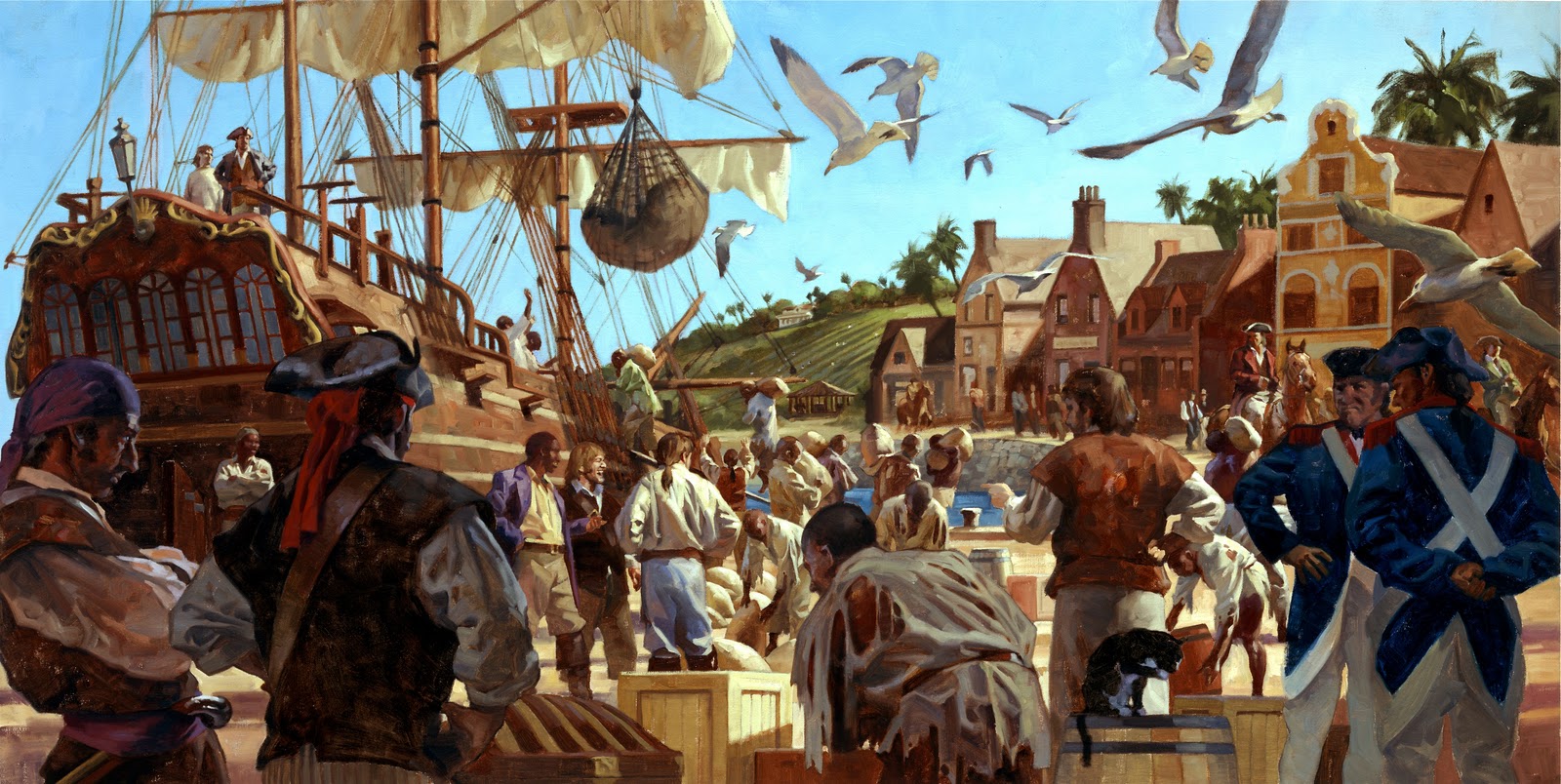
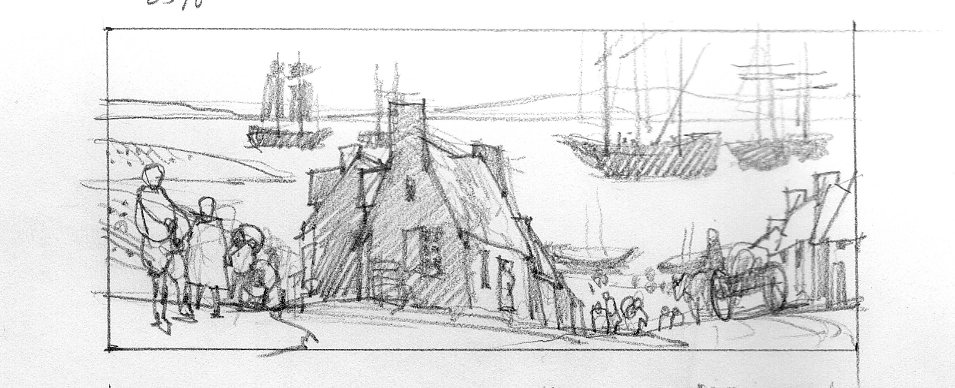

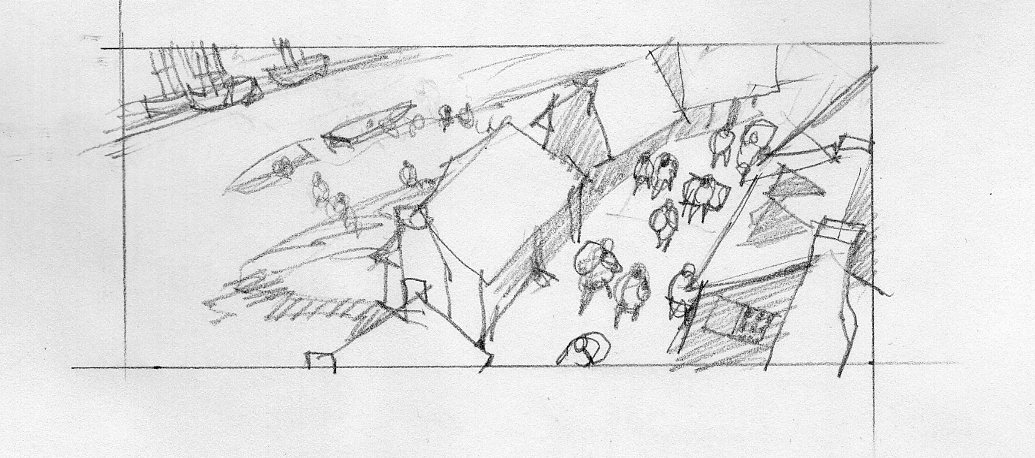
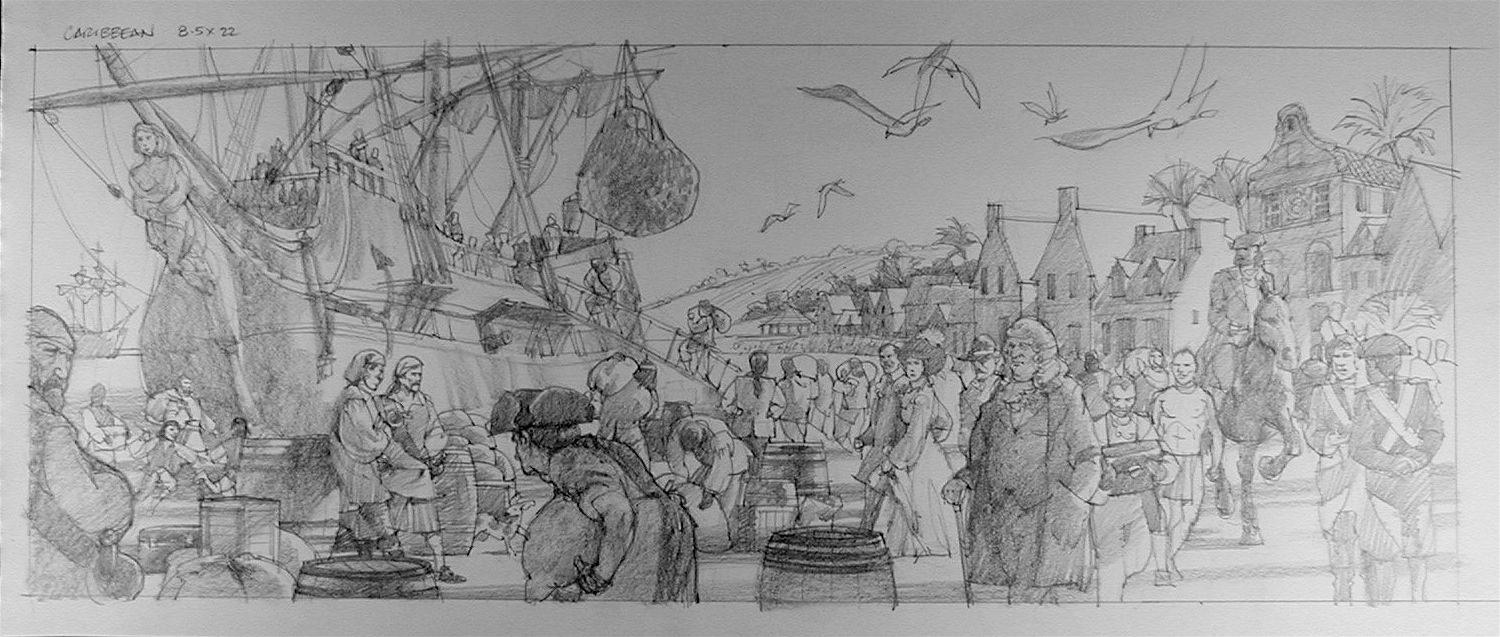
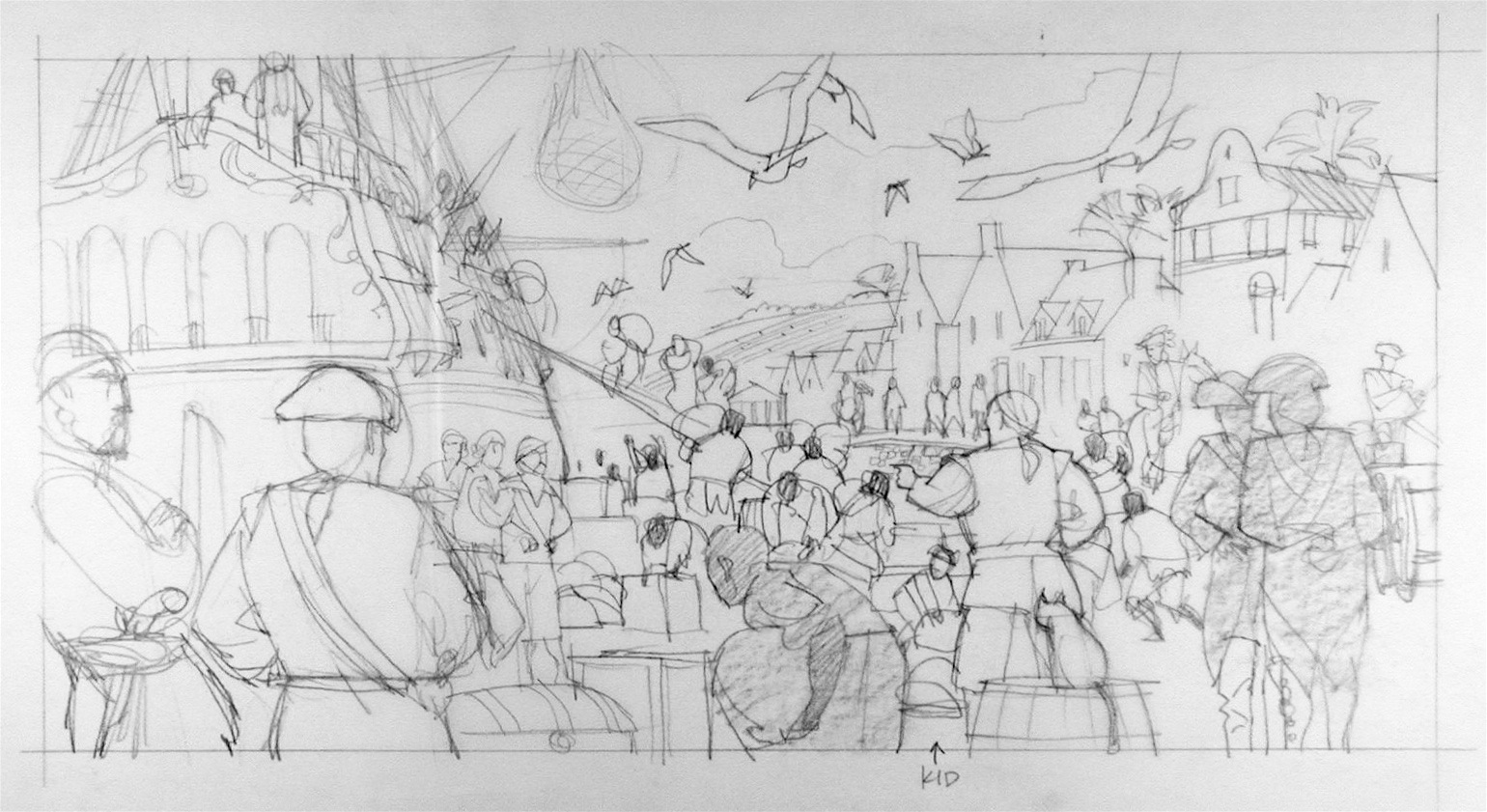
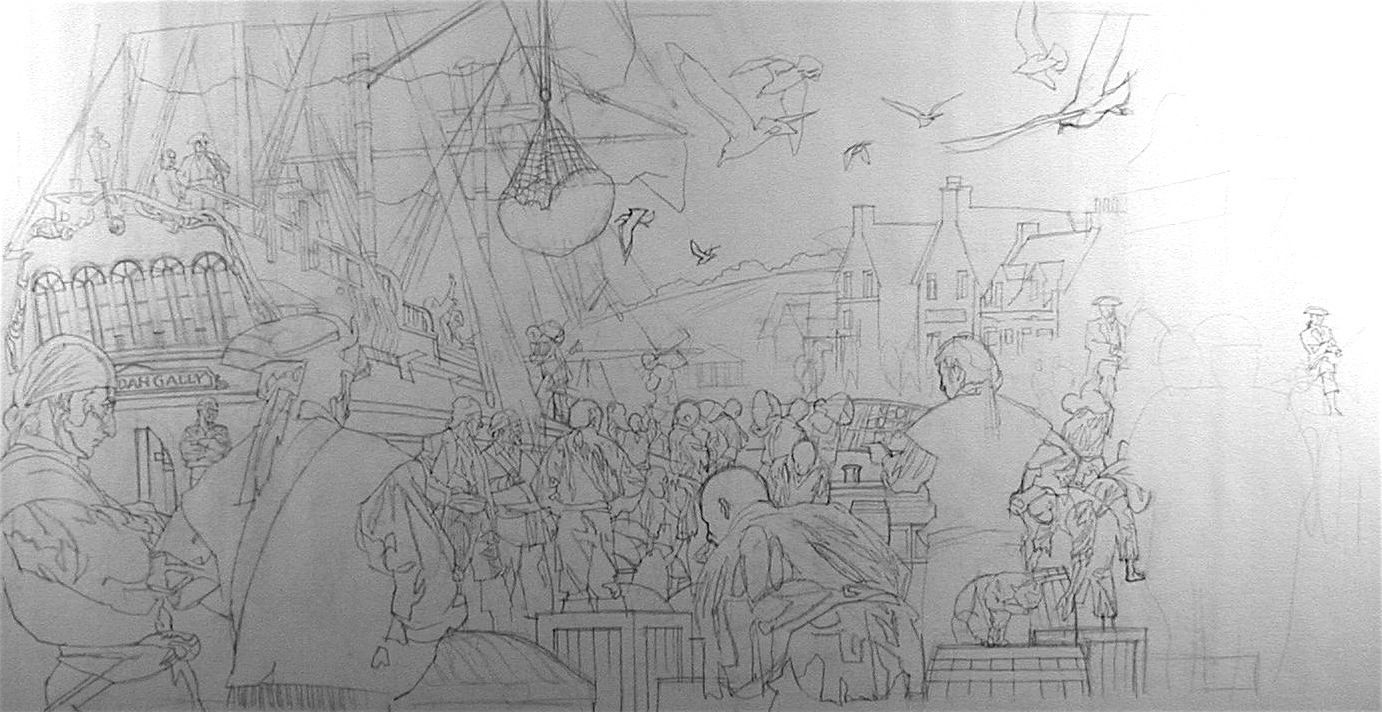
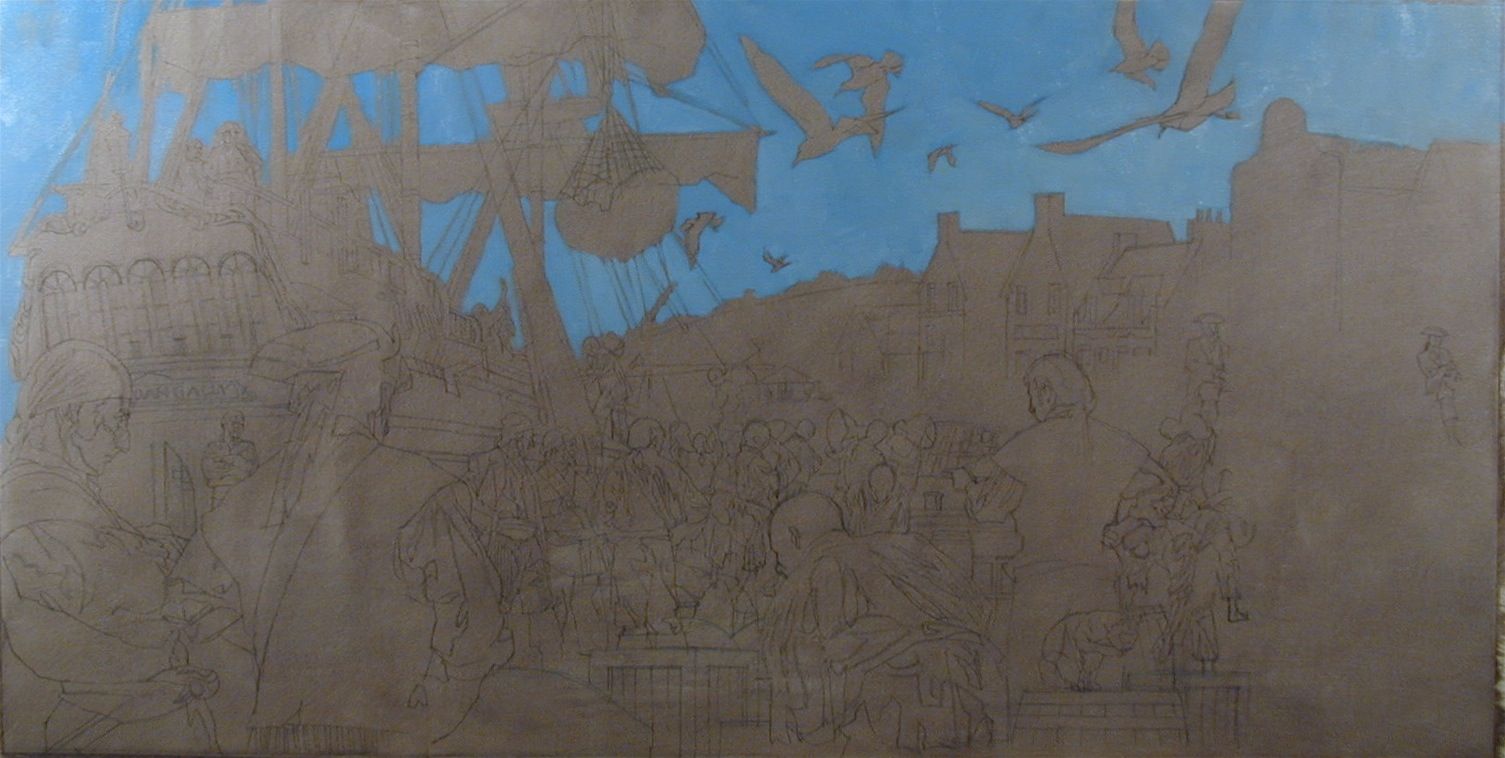
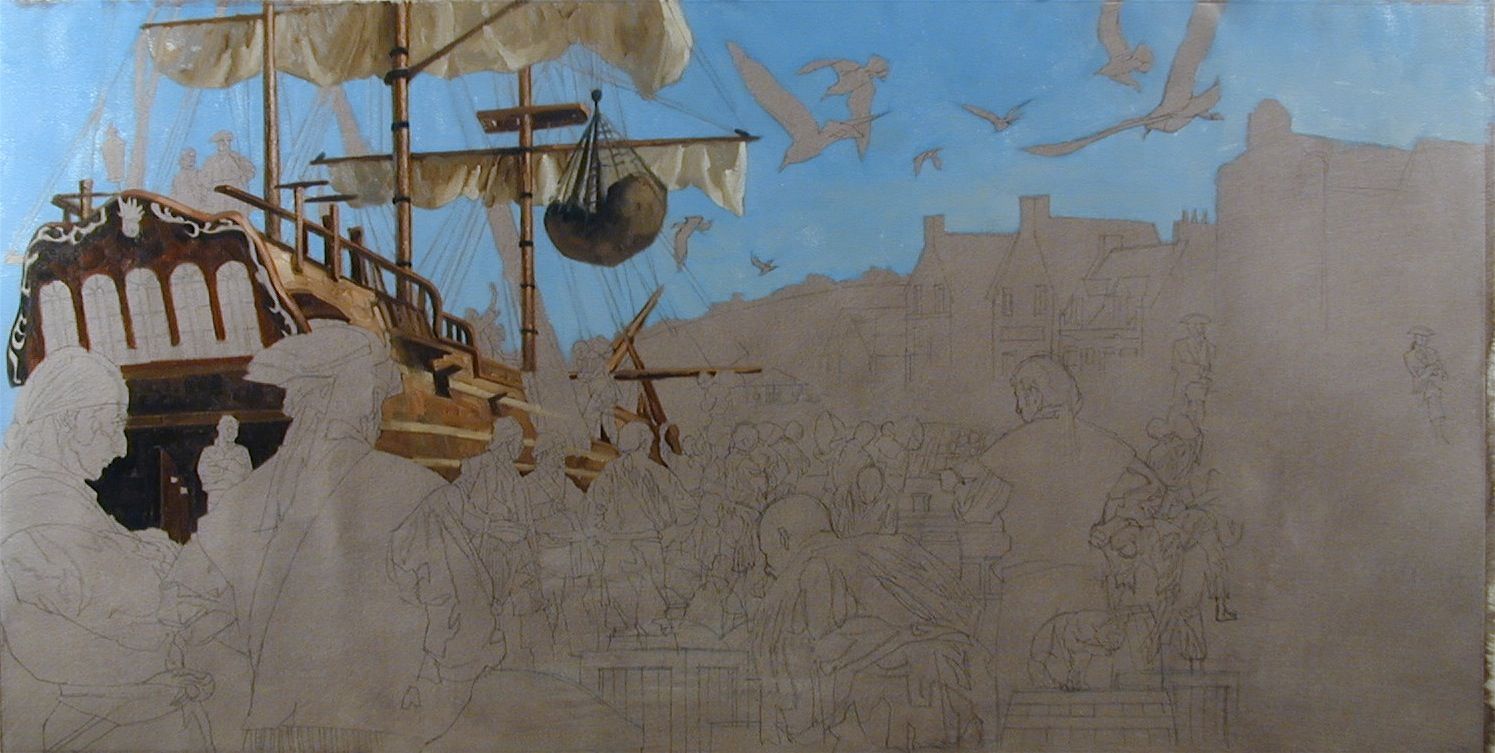
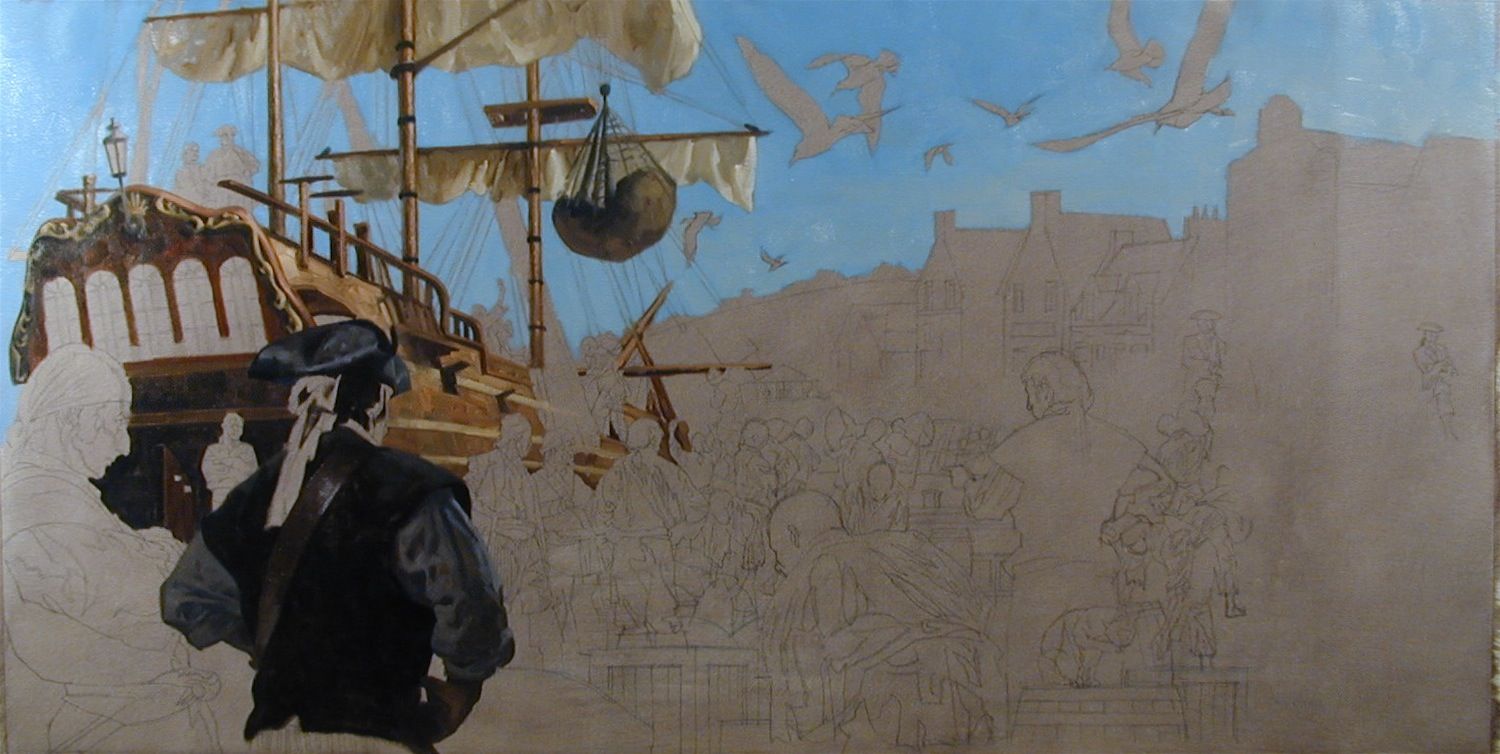
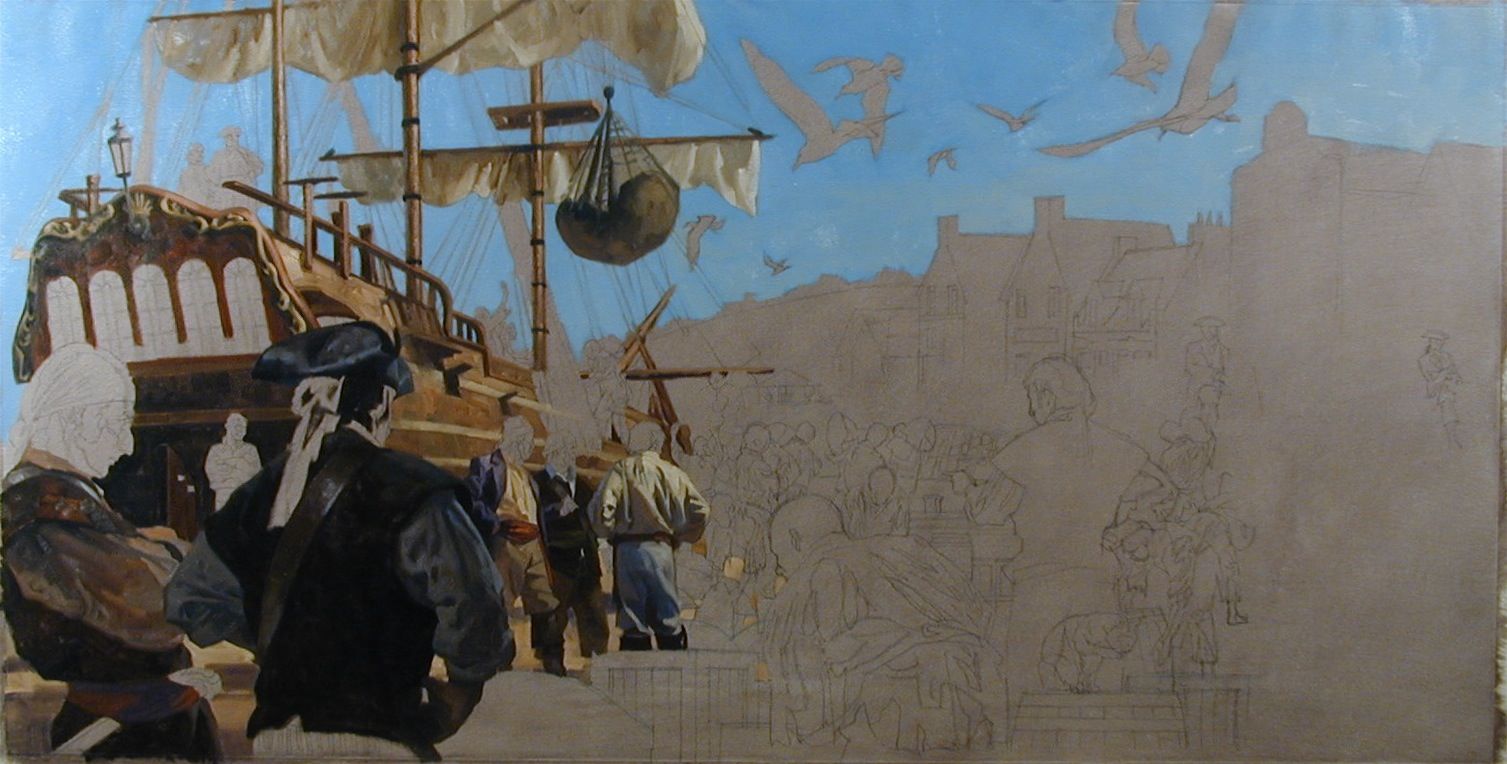
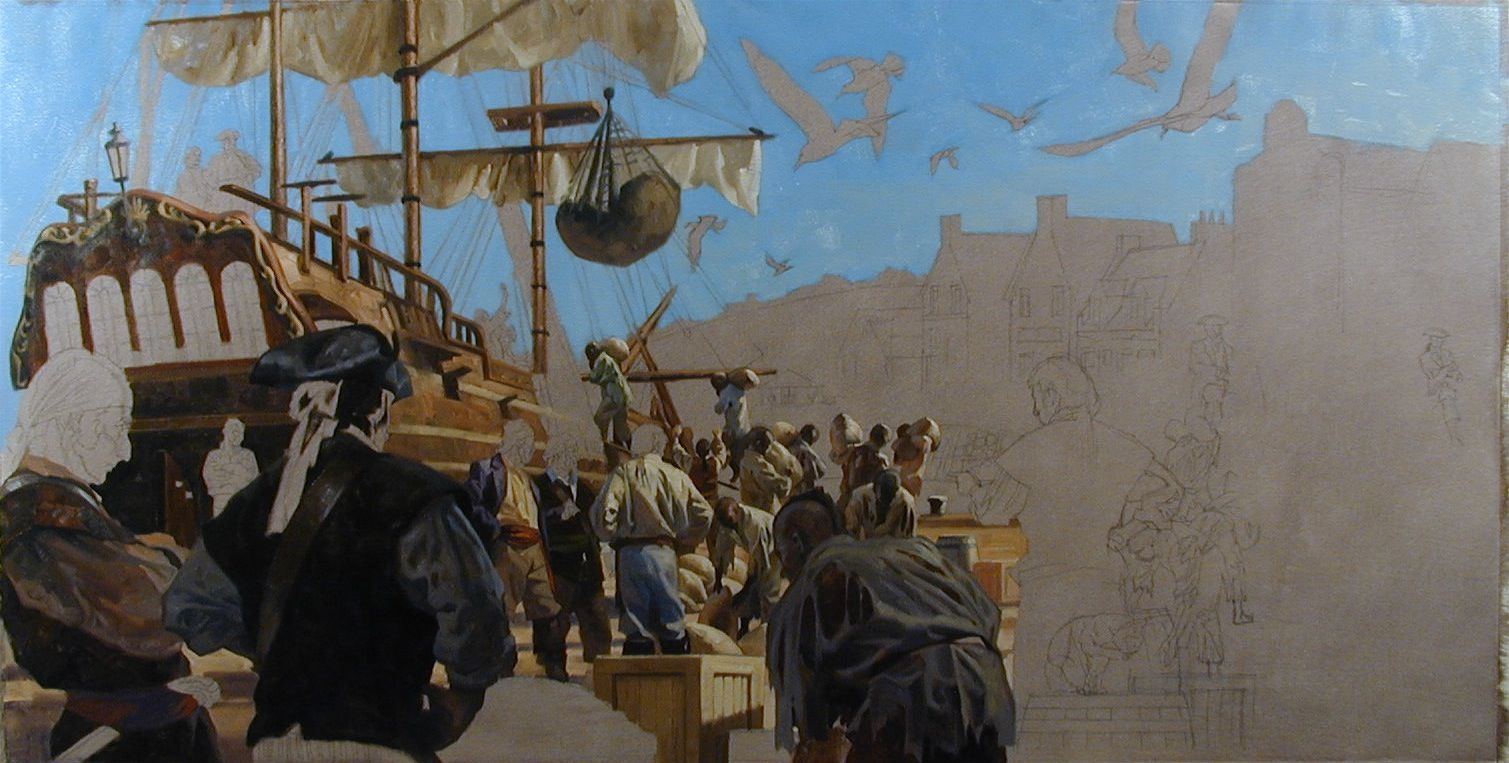
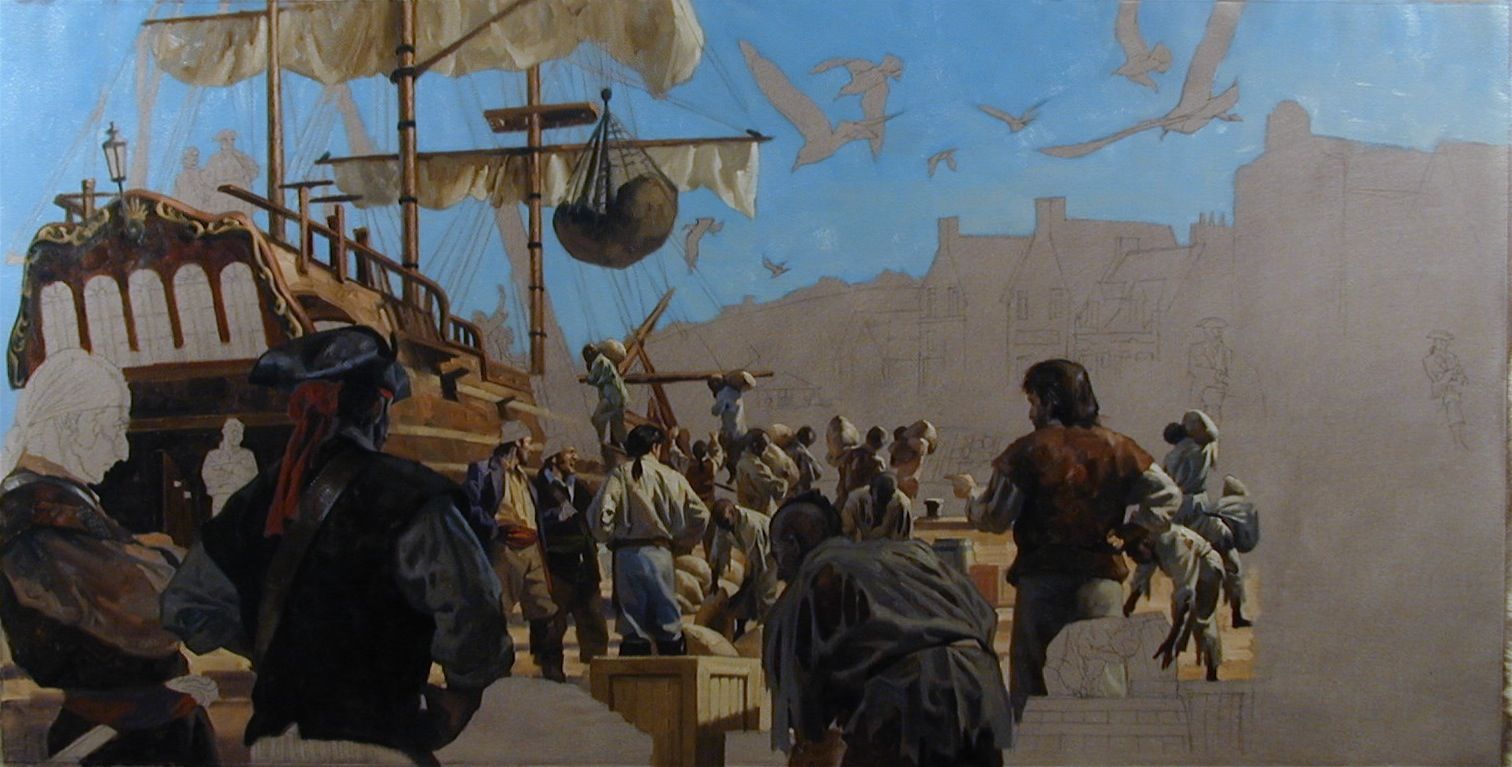
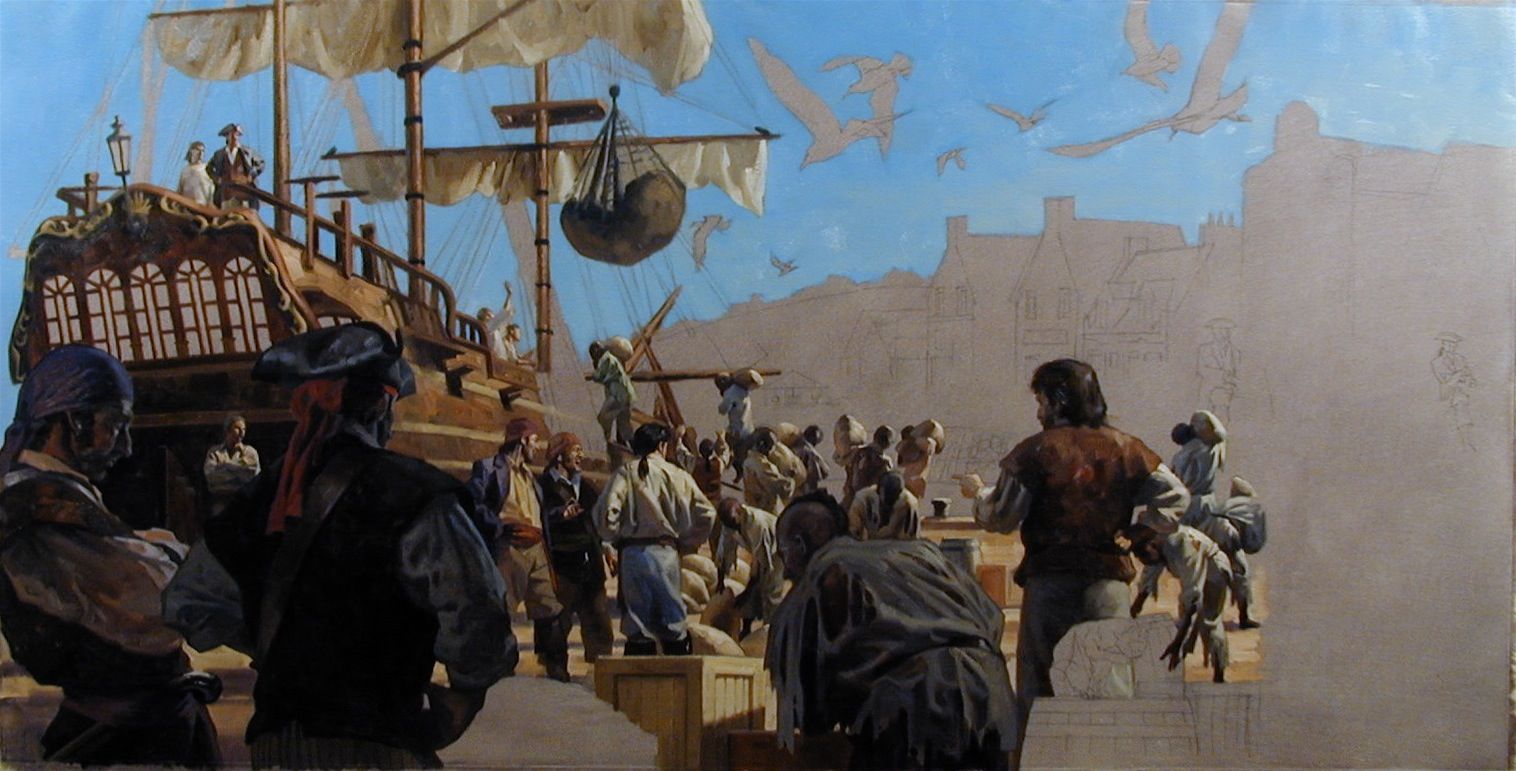
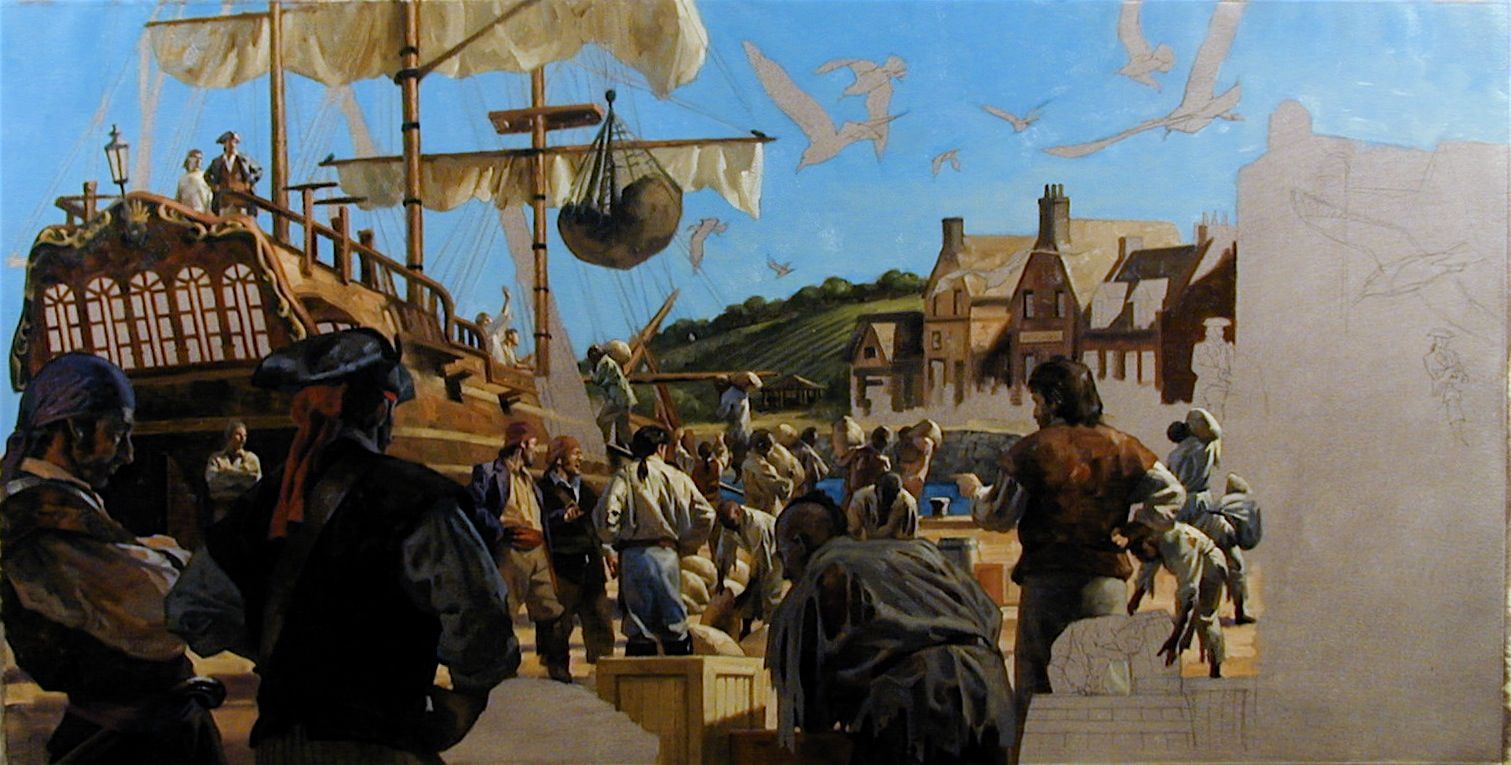
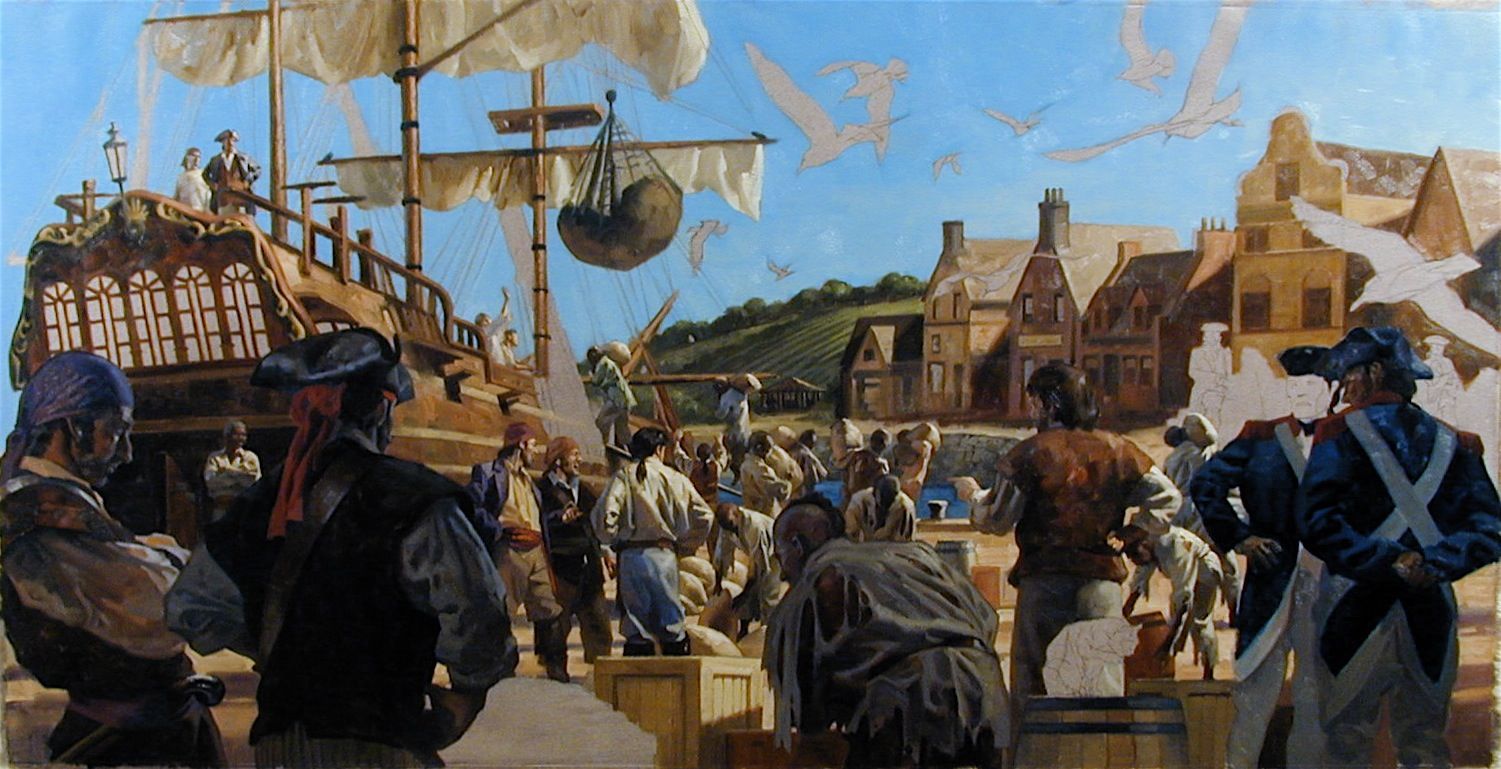
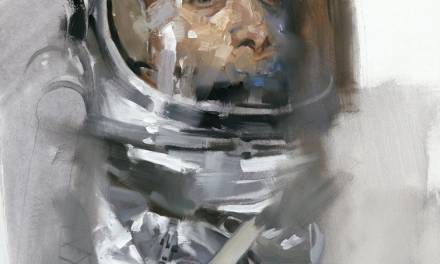
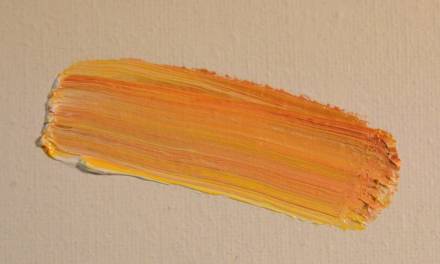
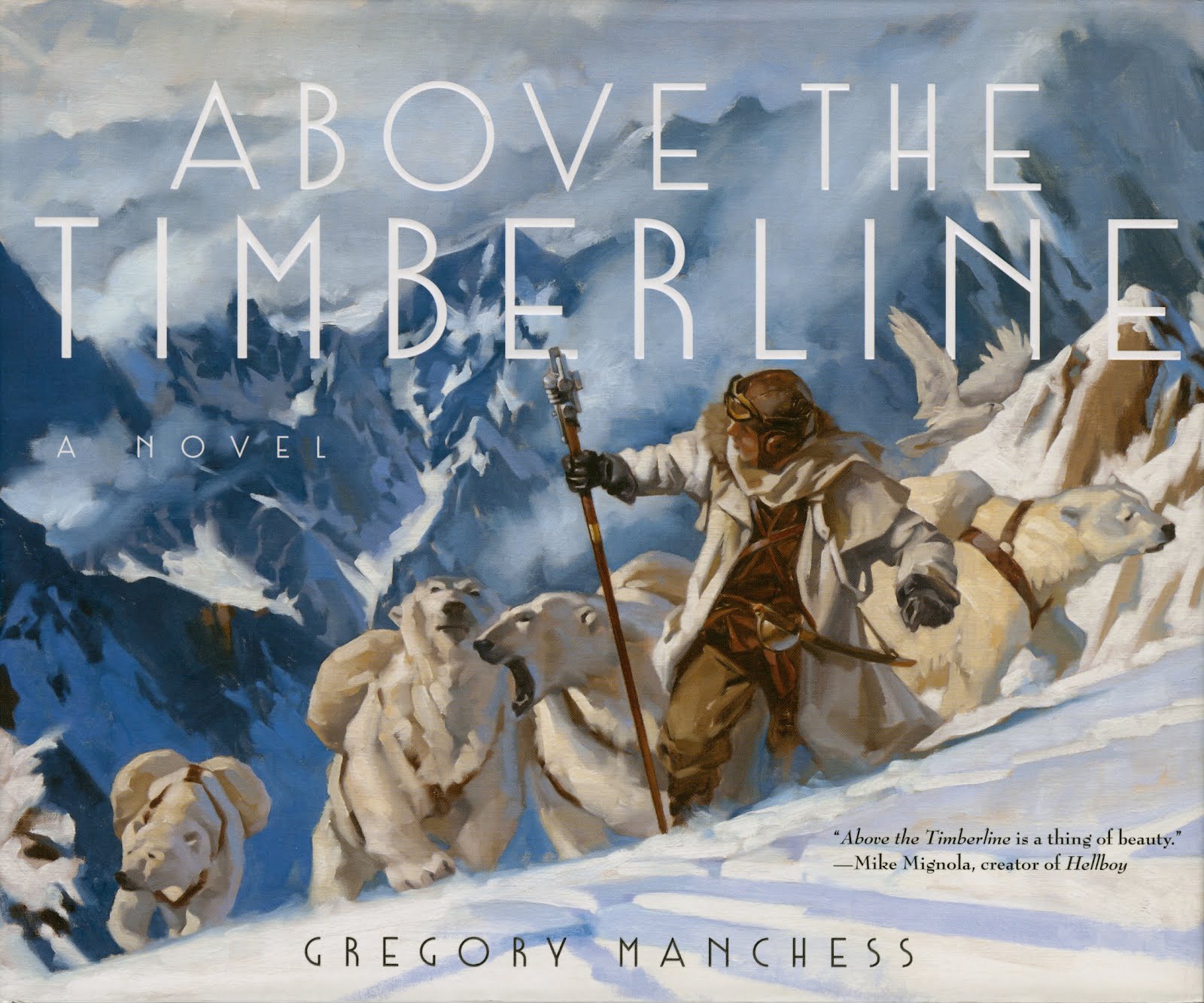
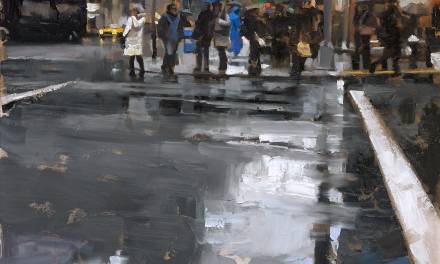
This is my favorite one of the series so far, really inspiring work. I really enjoy seeing your process too, it helps a lot.
Wow! I was getting tense just reading about the deadline! I love the sense of movement you've captured Greg, a brilliant piece.
Damn, those seagulls are good.
Woohoo, a pirate day! You know, Greg, I think I admire your thumbnails nearly as much as the paintings themselves. You get so much out of them – that second thumbnail is such a great little scene, I can almost see the painting…
Hi Greg
Thank you so much for posting these examples of your working method. Beautiful paintings and very instructive I have a question about your technique. Some artists seem to cover the whole painting in local mid-tone before rendering detail. But you seem to pick one area and finish it, then move on to the next. Most instructional books I have read on painting teach the first way, that is blocking in the whole thing first and then gradually bringing up the detail evenly throughout the painting as a whole, so one part is as equally finished as another.
Could you explain how you arrived at painting in your method as opposed to the other way and the advantages of it?
I agree with Dan. This painting is nothin without those seagulls.
Phew, I felt pressured reading this. To say you've “never laid paint down as fast”, the quality of the brush work is all there. I like the raw aspect to it in places, suites the subject of course so that's lucky. Awesome job. Jobs which just have to be put down and carried wet out of the door are quite something – a real test of metal. You succeeeded all the way, congratulations and admiration.
Oh and an extra thank you for finding the time to record the process despite all the pressure.
Beautiful job! I hope you were able to double your price for being jerked around so much. Keep up the good work!
Holy crap. As someone else said earlier, I was getting nervous just reading this! Glad it worked out alright though – it's an absolutely stunning piece! The thing that kills me is that it looks like you actually paint AROUND the all ropes when filling in the sky. That's some skill right there.
Incredible, beautiful. Are you ever afraid that clients will now expect seagull paintings in four hours? Seriously, have people pegged you as the fast guy? The quality is astounding and he can do it fast?
DO you have this feeling too? When there is just so much in a scene to paint and you start getting this feeling: What another person to paint…?
Please let me put something big in the foreground, ok ? ^^
To finnish these works in almost one go is amazing and a good example of how important refs are. (Would like to see how this would look without them XD)
Great comments, you all….not sure where to start.
These scenes of story-telling are built from the bottom up: thumbnail to thumbnail, sketch to sketch. By the time I get ready for the finish, I've already got a clear image in my head of where it HAS to go.
So, Markus, there is a lot in here painted from memory, and much made up. But it is not the point to make pictures like this WITHOUT referring to the real world. We don't live in a vision-less world, we shouldn't paint without one either.
I just had a weekend workshop explaining how to design a painting like this, and adding elements like the gulls is critical to establishing depth. (Too many illustrators today have lost this very subtle, very basic concept.) I'm really glad you guys like the birds…I LOVE doing that! And I'm a bird fan….
Yes, Alex, you're right. It's best to build the entire painting up gradually, solving most of your value problems as you go. I used to do this. What I do now, and pardon my expression, is advanced painting. If you've mixed as much paint and laid down as many values as I have, you'll know where and when to cut time corners and rules can be left behind. After all, aren't we supposed to be getting better and letting go of conventions? (a longer post needed for that subject). It's training.
The biggest reason for the sectioning like this is to cover space in a very short amount of time. The deadline looms. There's no time for “proper” painting….only time to get it down. There are many very subtle shifts throughout the piece as I complete a section, retouching into areas already painted. Almost too subtle to detect. But honestly, I've got to have a clear vision before even starting. No room for mistakes on something this big.
A reputation for speed? Yes, I've heard that. It still doesn't seem to get more calls though! I can compete with digital very easily. If changes are needed post-paint, I can make the call to do it physically or digitally…in that I have the advantage. Digital painters tend to change too often in the early stages. Why? Because they can, and it's easy.
Don't get me wrong: I LOVE digital work. I'm just faster with the pigment.
I can't believe I even thought I could record this thing along the way, but I knew it would be fun to have. A slight pain in the neck, but I'm getting a chance to share with you guys, and that makes the effort worthwhile. Great to share with painters!
Yeah, Jake….painting around the ropes makes them look much more real, and much more a part of the painting. Some of the finer lines were stroked in on TOP of the sky, too. A combination of both. Makes it feel better. A LOT more work….yet makes that subtle difference, y'know?
You guys have great questions….thanks for inquiring, or uh, calling-me-out!
Painting is like playing violin: you train and train and train. Then you rehearse for the concert. You play it, then train some more. One day, you're a virtuoso….and there's still more training ahead. It NEVER STOPS.
Hi again Greg
Thank you for taking the time to reply (and so quickly : ) to my question. I really appreciate it – it's something I have I have often wondered about after seeing your “Above the Timberline” video. I agree absolutely that the aim should be to go beyond convention and not be bound by it, something for me to aspire to anyway, and have in the back of one's mind perhaps while putting in the basic training.
On the subject of “Above the Timberline” what a fantastic video that is! I have watched it many times and had huge amounts of inspiration from it. For me it has been a beacon of light, and I just can't say enough good things about it. So inspirational. Thank you again.
Blown away by this beautiful painting, you capture the mood as if we were there in person perfectly imho. Did you have fun though? I mean, some pressure is good, but this seems like borderline 🙂
Thanks for sharing!
More than a few people have asked me why I don't sell my photos. I told them because then my photos would become work. They didn't understand.
Hopefully painting isn't all work for you, that you do have some fun too.
Mouth gaping in awe…
These paintings are all the more impressive for their insane deadlines, and changes done late in the game.
While I think this painting would have profited from a bit more (denser?) aerial perspective, it still is my favourite of the range. It shows an everyday scene – far to few of those in the world lately. The birds are really cool but the cat is best. I love the way you put the forground characters in shadow to give depth and frame.
Hat off!
Thanks again, you all!
Above The Timberline has started something: I've written a fully illustrated novel-hybrid, stuffed full of planned images about this story I started. I'll keep everyone posted about its progress. THAT was a fun painting, even though I had a camera shoved in close to the brush, my paint, my face….I still had a great time.
I do have fun, ces. Sometimes the stress is intense, but I remind myself that I really wouldn't want to be doing anything else, unless I was doing a movie or something. Even then, it's about story-telling, which is always fun. After years of training, even the hard work becomes joyful. Sometimes, moreso.
Nico–good thought. Yet, a slight aerial perspective would've put us above the characters in the foreground and we would lose the immediacy of the moment…we would feel pulled away from it. I wanted people to feel a part of it. (It has to do with the type of 'shot' you use, like in cinema, as to how the viewer feels.) I'm so glad you like the cat. In fact, it's Irene Gallo's cat, Jack, who died two days ago. We'll miss him.
oh my goodness, how did you work under that much pressure? i can't even imagine!
I've seen the Real-Pirates exhibit twice here in San Diego. It's a really fascinating exhibit and you're paintings are integral to the whole experience… which is why, I wish they would have credited you on site. The internet is fine for figuring these things out, but I really felt they should have had a placard beside the imagery, letting interested parties know who did the incredible paintings. Even the accompanying Howard Pyle paintings were not called out.